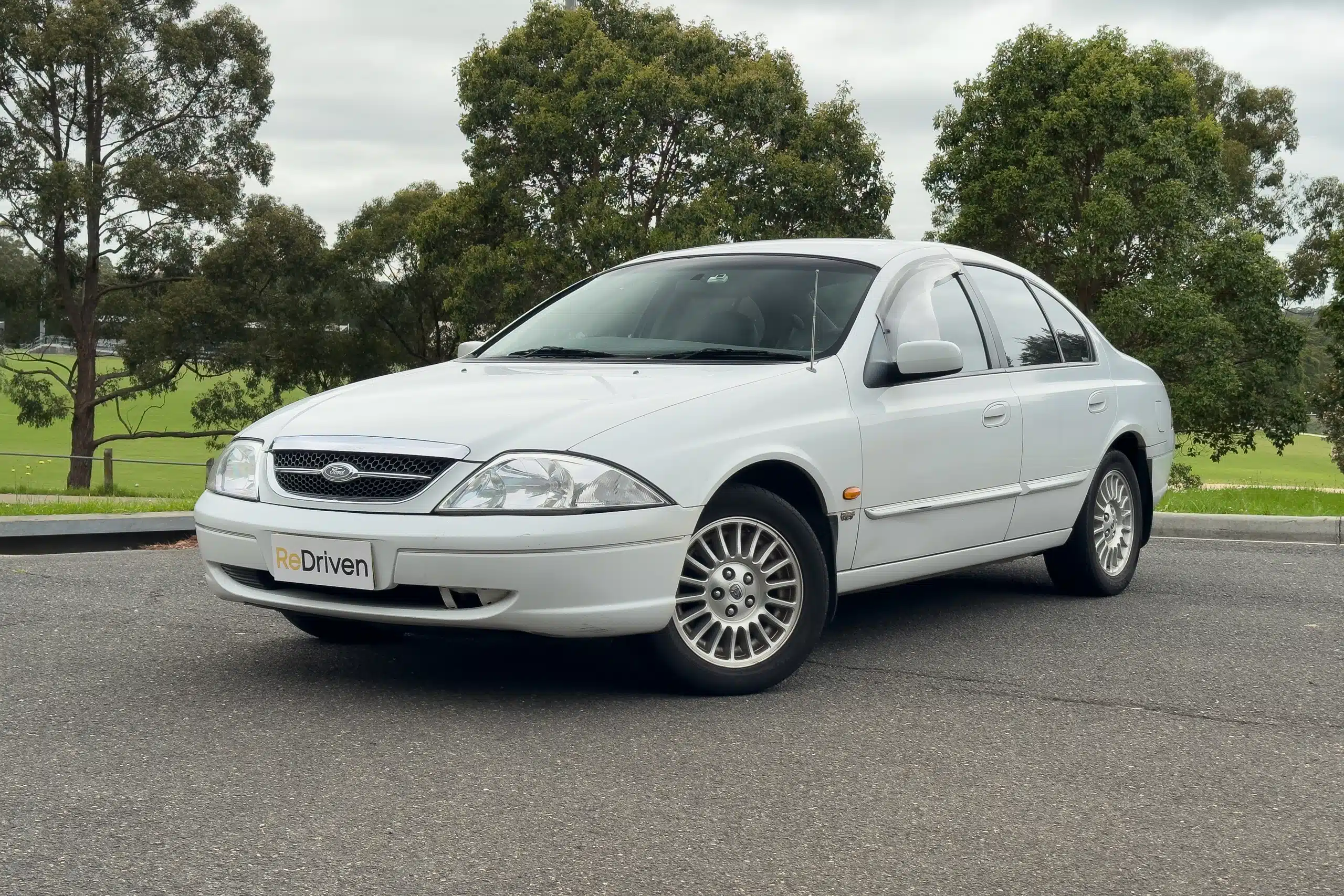Likes
- An absolute Aussie icon for not an exorbitant asking price.
- Very affordable parts and repair costs.
- Designed, engineered and built to handle Australia.
- Plenty of trim specs and examples to choose from.


















Interested in buying an AU Falcon, here are the basics that you need to know.


































Exterior:
Inside:
Mechanically:
Exterior:
Inside:
Mechanically:
Despite the list of potential issues, the AU is a relatively simple car, and repair work is generally straightforward with affordable parts, excluding rust and paint problems.
Exterior:
Inside:
Mechanically:
Despite the list of potential issues, the AU is a relatively simple car, and repair work is generally straightforward with affordable parts, excluding rust and paint problems.
Should you consider purchasing an AU? Typically, we would advise that the decision depends on your specific situation and the condition of the particular vehicle you are considering. However, if it’s not a complete rust bucket, and a qualified mechanic has given it a thorough inspection and approves it, then there’s no reason not to go for it. It would almost be un-Australian not to.
The AU embodies the spirit of Australia in a car. Just like our diverse population, it comes in a vast array of colours, shapes, and sizes. In various situations, the AU, much like Australians, can be inappropriate and unconventional. Both are often divisive, and let’s face it, they may not always be considered the most attractive.
Yet, at its core, similar to Australia and its people, the AU is a reliable, great-value, no-nonsense workhorse that gets the job done while bringing a smile to your face.
Moreover, these vehicles are budget-friendly, enjoyable to drive, and their maintenance is both easy and affordable.
However, we kindly request a favour – if you decide to get one, please avoid driving like a dickhead. Driving like this tarnishes the image of an Aussie icon for everyone.
Should you consider purchasing an AU? Typically, we would advise that the decision depends on your specific situation and the condition of the particular vehicle you are considering. However, if it’s not a complete rust bucket, and a qualified mechanic has given it a thorough inspection and approves it, then there’s no reason not to go for it. It would almost be un-Australian not to.
The AU embodies the spirit of Australia in a car. Just like our diverse population, it comes in a vast array of colours, shapes, and sizes. In various situations, the AU, much like Australians, can be inappropriate and unconventional. Both are often divisive, and let’s face it, they may not always be considered the most attractive.
Yet, at its core, similar to Australia and its people, the AU is a reliable, great-value, no-nonsense workhorse that gets the job done while bringing a smile to your face.
Moreover, these vehicles are budget-friendly, enjoyable to drive, and their maintenance is both easy and affordable.
However, we kindly request a favour – if you decide to get one, please avoid driving like a dickhead. Driving like this tarnishes the image of an Aussie icon for everyone.
Should you consider purchasing an AU? Typically, we would advise that the decision depends on your specific situation and the condition of the particular vehicle you are considering. However, if it’s not a complete rust bucket, and a qualified mechanic has given it a thorough inspection and approves it, then there’s no reason not to go for it. It would almost be un-Australian not to.
The AU embodies the spirit of Australia in a car. Just like our diverse population, it comes in a vast array of colours, shapes, and sizes. In various situations, the AU, much like Australians, can be inappropriate and unconventional. Both are often divisive, and let’s face it, they may not always be considered the most attractive.
Yet, at its core, similar to Australia and its people, the AU is a reliable, great-value, no-nonsense workhorse that gets the job done while bringing a smile to your face.
Moreover, these vehicles are budget-friendly, enjoyable to drive, and their maintenance is both easy and affordable.
However, we kindly request a favour – if you decide to get one, please avoid driving like a dickhead. Driving like this tarnishes the image of an Aussie icon for everyone.
Have ultimate peace of mind when buying a used car by purchasing an official PPSR report.
Please note that pricing information is subject to fluctuations in the automotive market.
Information correct as of Jan 25, 2024.
The advice provided on this website is general advice only. It has been prepared without taking into account your objectives, financial situation or needs. Before acting on this advice, you should consider the appropriateness of the advice, having regard to your own objectives, financial situation and needs.
Read our full terms and conditions here.
You are the best, the content in your videos is so helpful, delivered in a great way. Please keep going as for sure you are unique in every way. All the best from Guatemala
L. G. - YouTube
You guys have truly found something wonderful… Loved this channel ever since from the beginning… Will support you guys as long as you guys keep making these wonderful car reviews…
Calvin - YouTube
This is probably the best channel I have ever seen when reviewing vehicles. New or old. The honesty is so appreciated. I’ve been a mechanic for 20 years and I find it very informative when looking for a vehicle for my daughter. Keep up the awesome work.
Jason T. - YouTube
© 2025 ReDriven All Rights Reserved